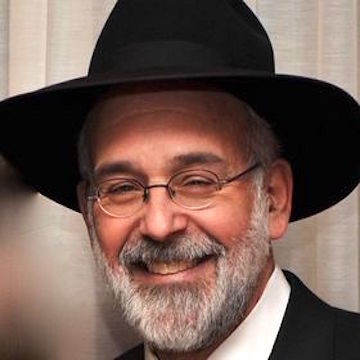Rabbi David Etengoff
338 results total, viewing 241 - 250
|
The theme of the Chosen People (am hanivchar) is repeated in a number of places in the Siddur, becoming a universally accepted principle of Jewish thought:
•From the blessing before …
more
By Rabbi David Etengoff
|
8/19/16
|
|
Our parasha, Mishpatim, contains the ethically-infused mitzvah “mi’devar sheker tirchak” (“Distance yourself from a false matter,” Shemot 23:7).
In his Torah …
more
By Rabbi David Etengoff
|
1/31/19
|
|
The best-known theme in our parasha, Ki Tisa, is the Chet HaEgel (the Sin of the Golden Calf), the most grievous sin in our nation’s storied history. In addition, our sidrah contains the …
more
By Rabbi David Etengoff
|
2/16/22
|
|
The prohibition of charging a fellow indigent Jew interest on a loan is one of the many subjects addressed in our parasha, Behar.
While this topic analyzed and expanded upon throughout …
more
By Rabbi David Etengoff
|
5/18/22
|
|
Our parasha begins with the famous words: “And these are the names of b’nai Yisrael who came to Egypt, with Ya’akov, each man and his household came” (Shemos 1:1).
In his …
more
By Rabbi David Etengoff
|
1/4/24
|
|
There is a famous machloket between Rashi and the Ramban as to whether the Mishkan (tabernacle) was created before or after the horrific incident found in our parasha of the Chet Haegel Hazahav (the …
more
By Rabbi David Etengoff
|
2/24/16
|
|
The penultimate pasuk of our parasha, Yitro, focuses on the law of constructing an altar made of stone: “And when you make for Me an altar of stones, you shall not build them of hewn stones, …
more
By Rabbi David Etengoff
|
2/15/17
|
|
The phrase in parashat Kedoshim, “and you shall love your neighbor as yourself” (Sefer Vayikra 19:18), is one of the most often-quoted verses in the Torah. Unfortunately, its popularity …
more
By Rabbi David Etengoff
|
5/3/17
|
|
Our parasha, Eikev, contains a phrase that is familiar to many, since it is found in the first blessing (Birkat Avot) of the Shmoneh Esreh: “G-d your L-rd is the ultimate Supreme Being and the …
more
By Rabbi David Etengoff
|
8/9/17
|
|
There are two mitzvot in the Torah whose fulfillment promises arichut hayamim (long life). The first is the mitzvah of kibbud av v’eime (honoring one’s parents), found in the asseret …
more
By Rabbi David Etengoff
|
8/26/20
|

 62.0°,
Mostly Cloudy
62.0°,
Mostly Cloudy 